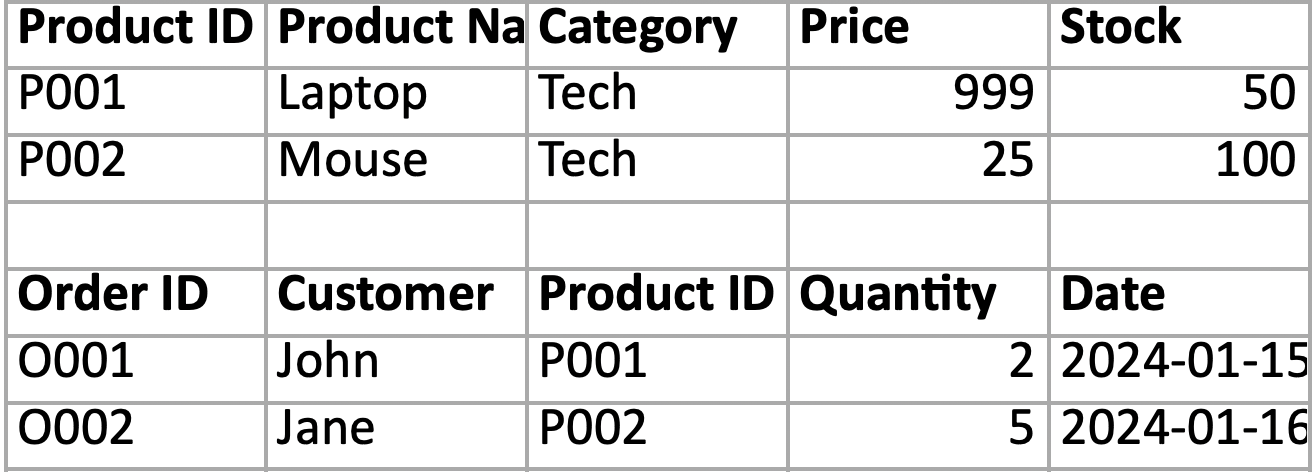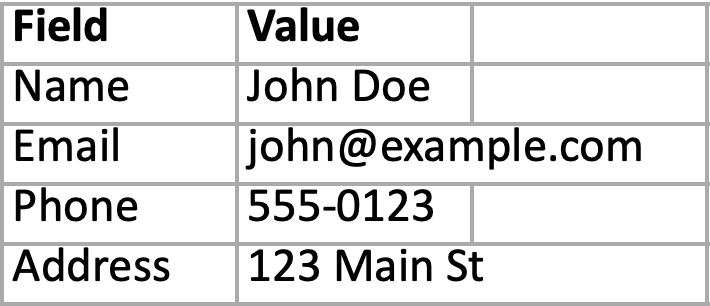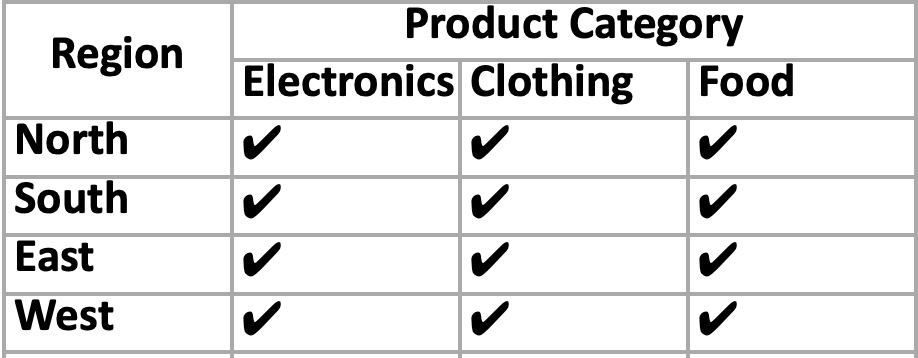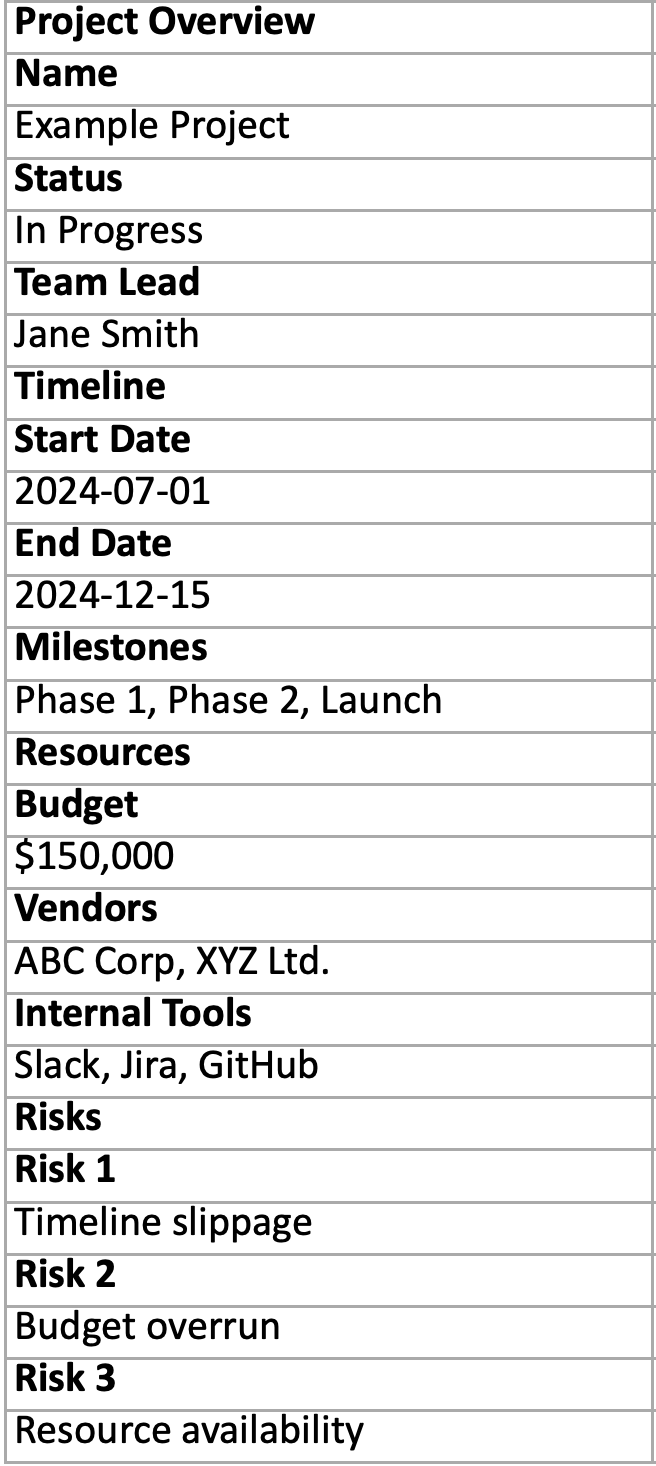Excel File Preparation Guidelines
While Gurubase can interpret different Excel structures, it is still important to format your tables for the best possible extraction and analysis results. Follow these guidelines to ensure your data is structured optimally for processing.1. Complete Headers and Columns
Always include complete headers and columns for all data sections. ✅ Good Example

2. Use Clear Structures
Avoid complex nested structures and multi-tables when possible. ✅ Good Example


3. Clean Empty Rows and Columns
Remove all empty rows and columns to keep files as small as possible. Before Cleaning:

4. Split into Smaller Sheets
Divide large datasets into multiple smaller, focused sheets. Example Sheet Structure:- Sheet 1: Customer Information
- Sheet 2: Product Catalog
- Sheet 3: Sales Transactions
- Sheet 4: Inventory Levels
- Faster processing
- Better organization
- Easier to maintain
- Reduced file size
5. Use Table Structure Over Form Structure
Prefer tabular data layout instead of form-based layouts. ✅ Good Example (Table Structure)

6. Proper Nested Structure
When nesting is necessary, ensure flows completely encompass each other and merge headers around grouped content. ✅ Good Example (Proper Nested Structure)



- Complete Coverage: Each nested level should fully encompass the data below it
- Merged Headers: Use merged cells to group related columns under main categories
- Consistent Structure: Maintain the same pattern throughout the sheet
- Clear Hierarchy: Make the relationship between levels obvious
7. Column Oriented Tables
Gurubase can also handle column oriented excel files. Just make sure you include proper headers above the data cells: ✅ Good Example (Proper Nested Structure)
8. File Size Optimization
Keep files as small as possible for better performance.- Remove unused worksheets
- Delete empty rows and columns
- Use appropriate data types
- Compress images if present
- Avoid unnecessary formatting
9. Common Mistakes to Avoid
- Missing headers - Always include column headers
- Unclear header hierarchy - Make nested header relationships obvious
- Inconsistent header spanning - Use merged cells consistently for grouped columns
- Mixed data types - Keep consistent formats within columns
- Excessive nesting - Prefer flat structures when possible
- Large single sheets - Split into multiple focused sheets
- Unnecessary formatting - Remove complex styling
- Hidden data - Ensure all relevant data is visible
- Inconsistent naming - Use clear, consistent naming conventions
- Ambiguous header names - Use descriptive, specific header labels